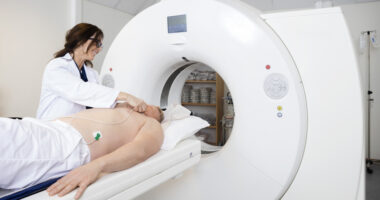HLA-DRB1 gene mutation linked to higher risk of severe sarcoidosis
Patients with variant more likely to have fewer immune cells called lymphocytes

Sarcoidosis patients who are male or carry a genetic variation called HLA-DRB1*07 are more likely to have lymphopenia — low levels of white blood cells called lymphocytes — a known risk factor for more severe disease.
That is according to a study, “Peripheral blood lymphopenia in sarcoidosis associates with HLA-DRB1 alleles but not with lung immune cells and organ involvement,” published in Clinical & Experimental Immunology.
Lymphocytes, including B-cells and T-cells, are a group of immune cells that are important for fighting off infections, though they also play a role in driving immune-related disorders like sarcoidosis. Prior research has shown that some people with sarcoidosis have abnormally low lymphocyte counts, a condition known as lymphopenia, in their blood.
Blood lymphopenia has been linked to more severe disease among people with sarcoidosis. However, it’s not clear what causes lymphopenia to develop, or why it appears in some patients but not others. Several ideas have been proposed. For example, some researchers have suggested that immune cell counts may decrease in blood because more immune cells are moving to the lungs or other organs due to the inflammatory process that drives sarcoidosis.
Researchers set out to study HLA-DRB1 gene and its link to lymphopenia
Another idea is that these immune cells are being depleted or destroyed in some patients, perhaps due in part to genetic variations. In this study, researchers in Sweden specifically focused on the potential role of a gene called HLA-DRB1 and its link to lymphopenia.
The HLA-DRB1 gene helps cells to create a protein called human leukocyte antigen, or HLA, which acts as a “display case” for the immune system — molecules from inside a cell are loaded into the HLA protein, which is displayed on the surface of the cell for immune inspection. This is one of the main mechanisms that immune cells use to identify cells that have become cancerous or are infected with a virus.
The analysis included data for 141 people diagnosed with sarcoidosis and followed for two years. Most of the patients were white and of Nordic descent — having patients of the same ethnic background can simplify genetic analyses as there is generally less variation, though the researchers noted it also limits whether the findings can be generalized to other groups.
More than a quarter (29%) of the patients analyzed had lymphopenia when they were diagnosed.
“Our finding of lymphopenia already at diagnosis in treatment-naïve patients lend support to the hypothesis that lymphopenia is related to sarcoidosis disease mechanisms, and not to treatment,” the researchers wrote.
Clinical data showed that patients with lymphopenia more often had scarring in their lungs (suggestive of advanced sarcoidosis), and they generally received more anti-inflammatory medications. These data are in line with prior findings suggesting that sarcoidosis patients with lymphopenia tend to have a more severe disease course.
“Sarcoidosis patients with [peripheral blood] lymphopenia should be carefully monitored as they are at risk of developing a non-resolving disease and disclose a poor response to at least 1st line treatment,” the researchers wrote.
90% of patients with lymphopenia were male
About 90% of patients with lymphopenia were male, as compared to about 63% in patients without lymphopenia. This may suggest that differences in sex-related hormones (e.g., testosterone and estrogen) may influence the development of lymphopenia, the researchers said.
Genetic analyses suggested that a specific variant in the HLA-DRB1 gene, known as HLA-DRB1*07, was significantly more common among patients with lymphopenia. Two-thirds (67%) of patients who carried this genetic variation had lymphopenia.
“The association with male sex and HLA-DRB1*07 may indicate an influence from sex hormones and a certain genotype [a person’s genetic makeup] on the sarcoidosis lymphopenia [features],” the researchers concluded.
Analyses of lung fluid showed no clear association between lymphopenia, as detected in blood, and counts of immune cells in the lungs. This finding goes against the idea that lymphopenia might be a result of immune cells moving to the lungs, the researchers noted.
“The results do not lend support to the hypothesis about sarcoidosis [peripheral blood] lymphopenia being due to a migration of … lymphocytes to other organs. Rather, they provide a basis for future studies on the connection between HLA-DRB1*07 and [peripheral blood] lymphopenia mechanisms,” the team concluded.








